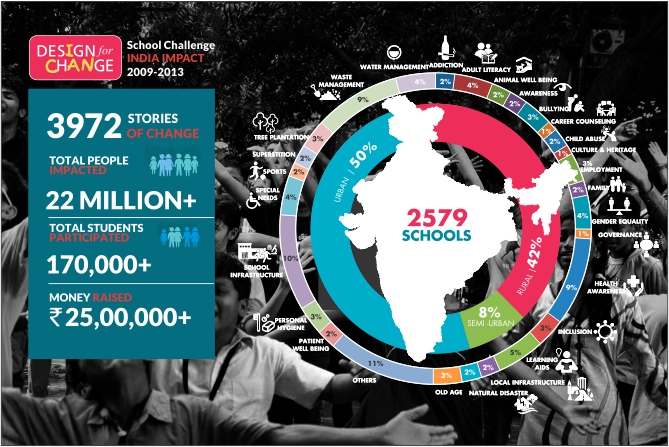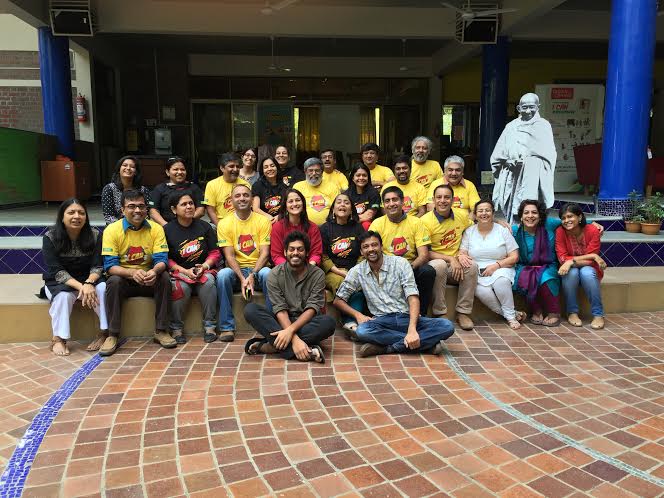Design for Change has been making a great impact on children, the world over, thanks to a simple, sticky idea by Kiran Bir Sethi , Director of the charming Riverside School, located in Ahmedabad, India. An idea that enables children from all walks of like to use design thinking to solve the immediate problems around them.
The idea is so simple, you wonder why no one thought of this before. As a jury member, invited to evaluate and select the best stories, I was both amazed and elated.
Children are introduced to a simplisitic, design thinking approach, called FIDS ( Feel, Imagine, Do and Share), where they feel for a problem that affects them, imagine an alternative, preferred scenario, work on the change and share their stories of success. It’s the simplicity of the process that appeals to schools, both private and public, rural and urban, rich and poor, alike. Children take on issues big and small that affect them from Bullying to Cleanliness, Growing trees to banning plastics, transforming classrooms to transforming attitudes and feel empowered to bring about change using the ‘ I Can’ spirit.
There is no better example for the power of Design thinking than this.
Infographic Courtesy: http://dfcworld.com
The d*school or the Hasso Plattner Institute of Design at Stanford, introduced the concept to the K-12 schools in USA with exciting results. “Teachers and students engage in hands-on design challenges that focus on developing empathy, promoting a bias toward action, encouraging ideation, developing metacognitive awareness and fostering active problem solving.”
While that was a guided, supervised process, Kiran’s DFC is self-starting and viral. Which is all the better. Her TED talk has been so widely received that it is impacting children globally.
Recently the Pearson report called ‘The Learning Curve’, emphasises, the need for 21st century skills for our children, that include: Leadership, Digital Literacy, Emotional Intelligence, Communication, Team working, Problem solving and Entrepreneurship. Amazingly, children who go through design thinking are impacted with the exact same skills.
Others have been catching up to the impact this has. NoTosh, a Edinburgh based organisation, that works with governments and schools has found success in introducing Design Thinking at schools, with the ultimate aim of improving the overall learning process in schools.
The DFC team is all set on the path to making an entire new generation of children with the creative confidence to survive in the new world order. And, happily, Design is helping them reach there.




